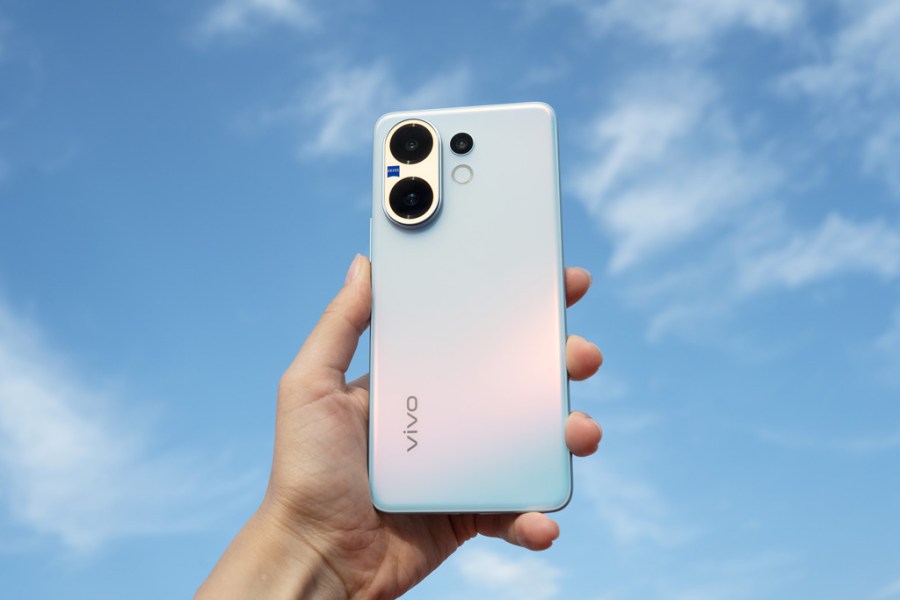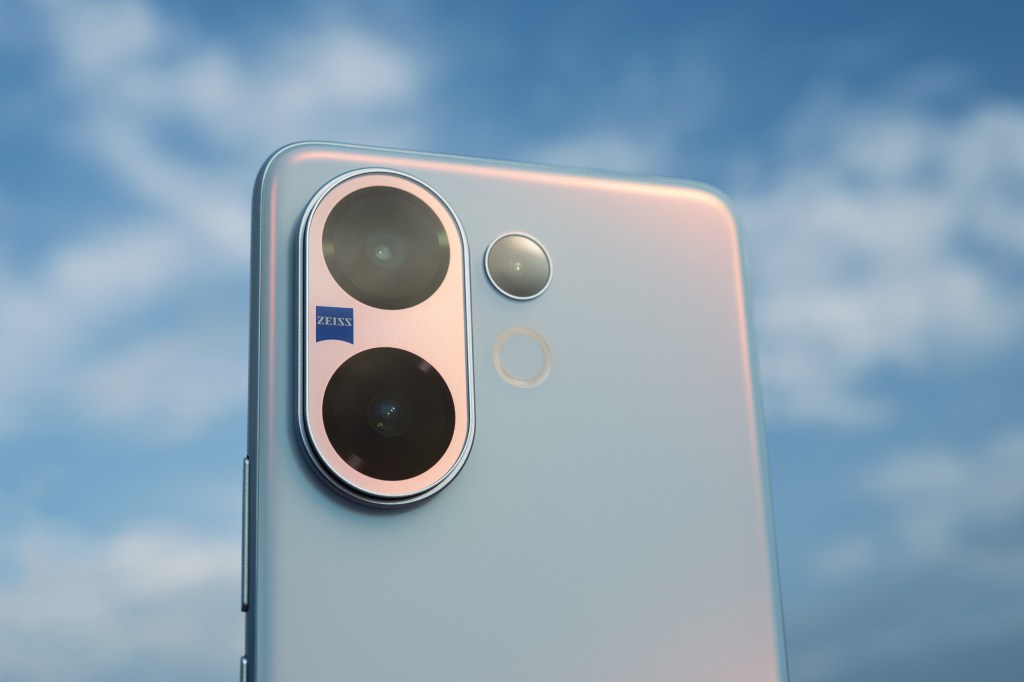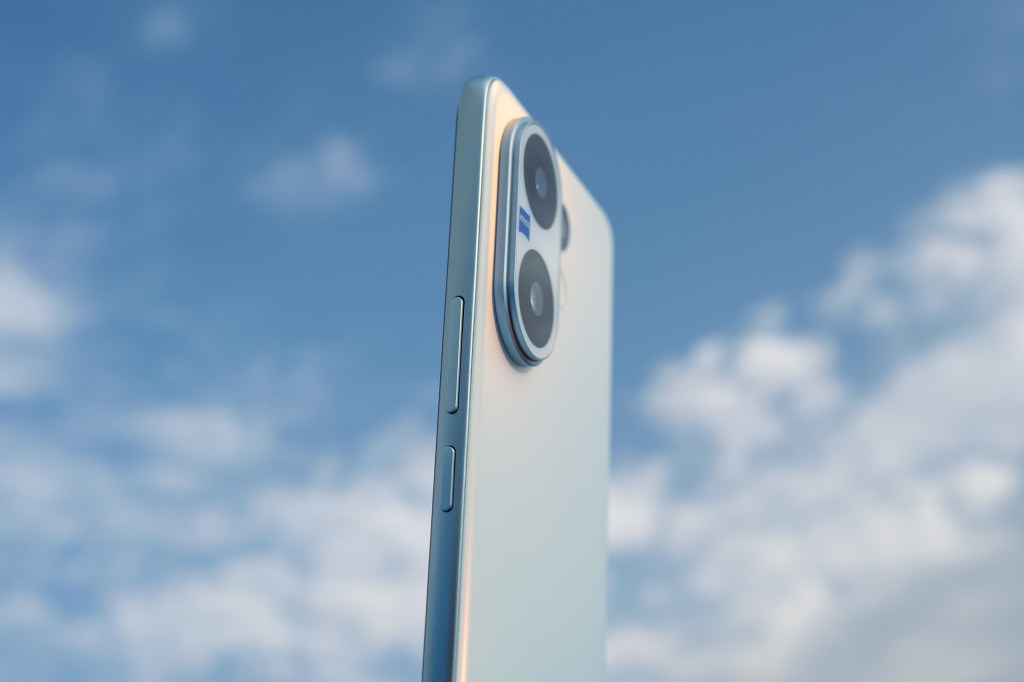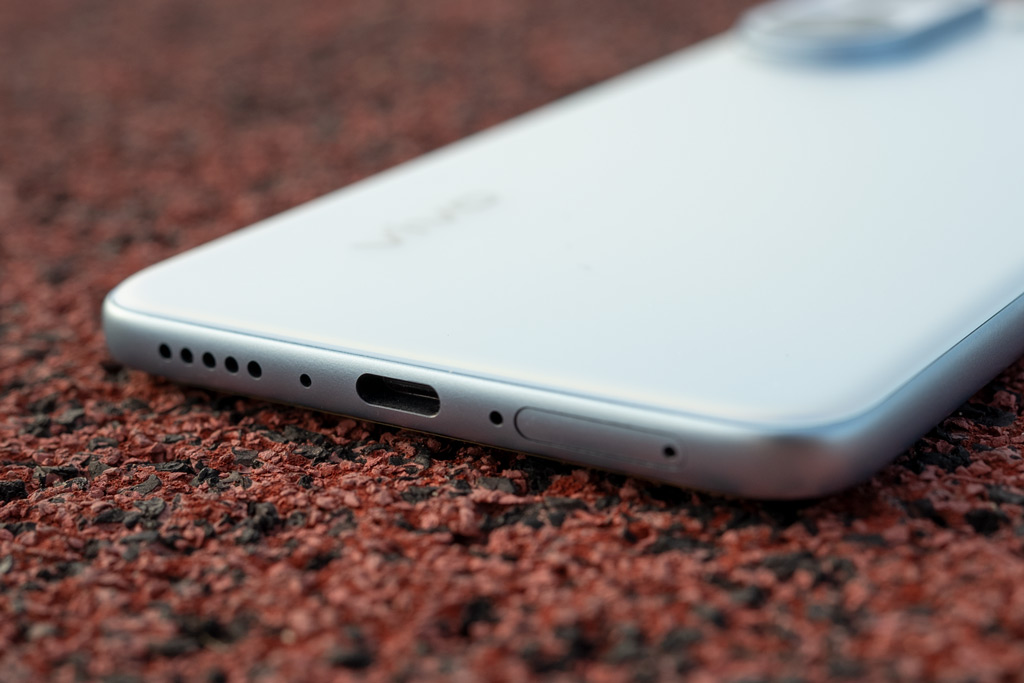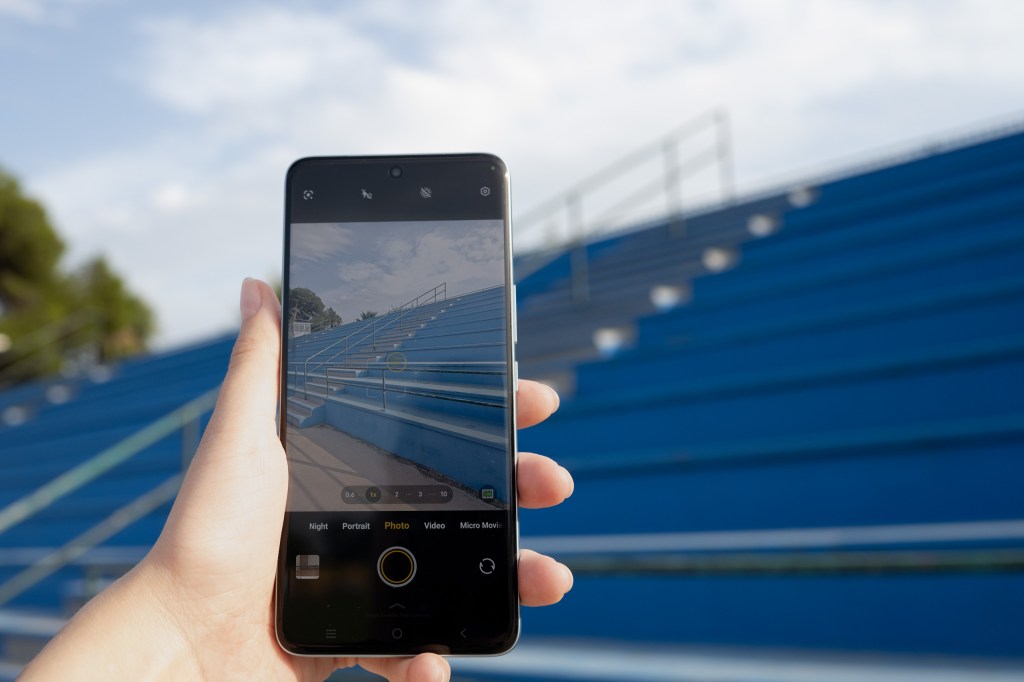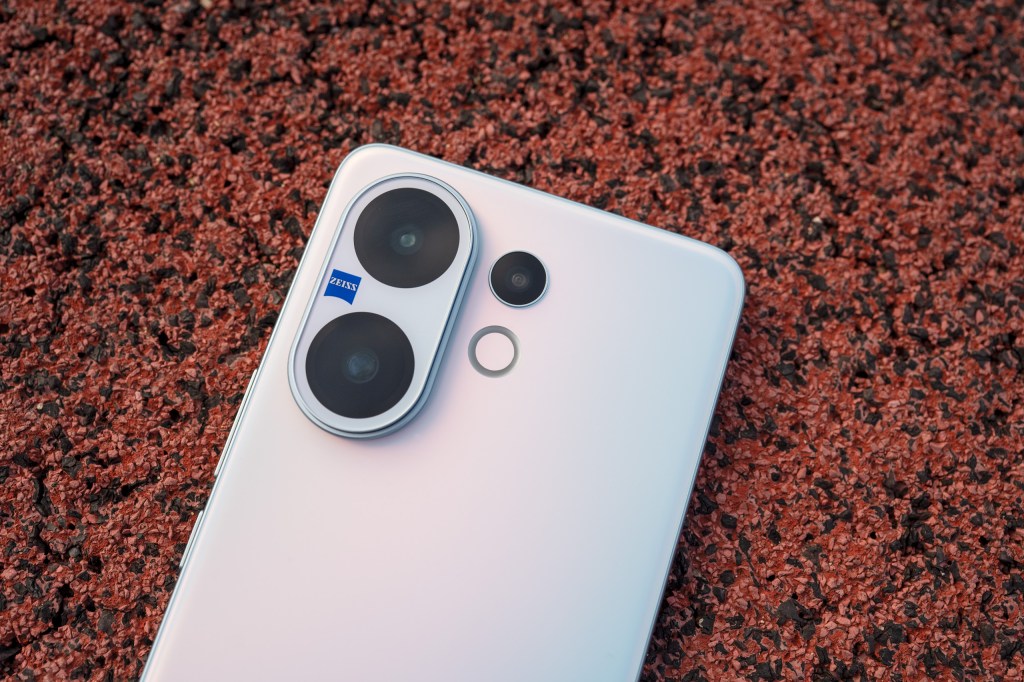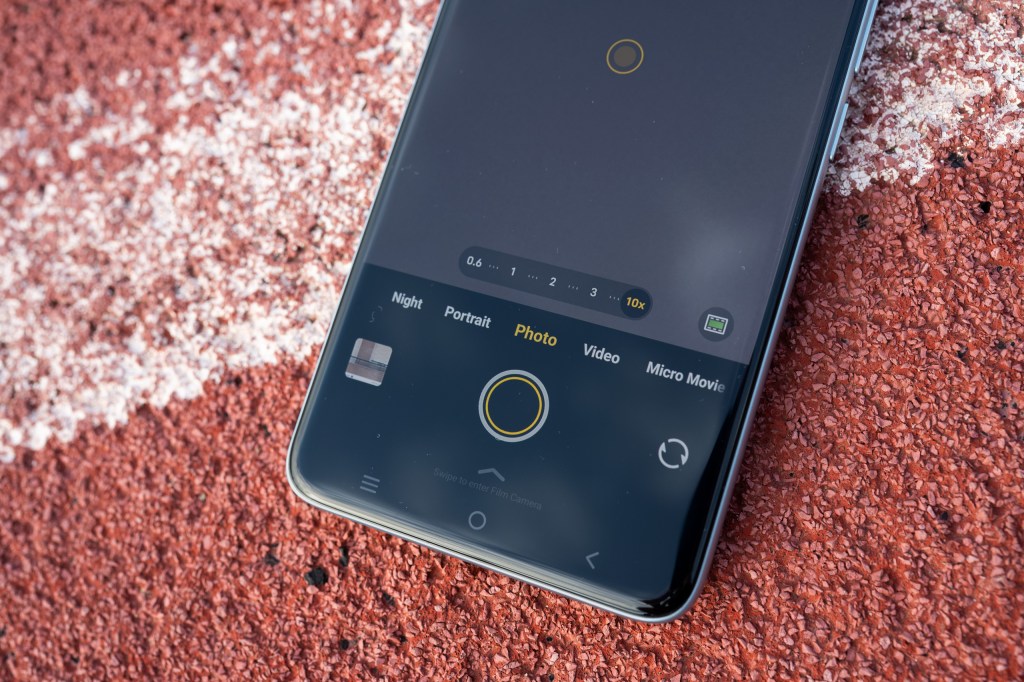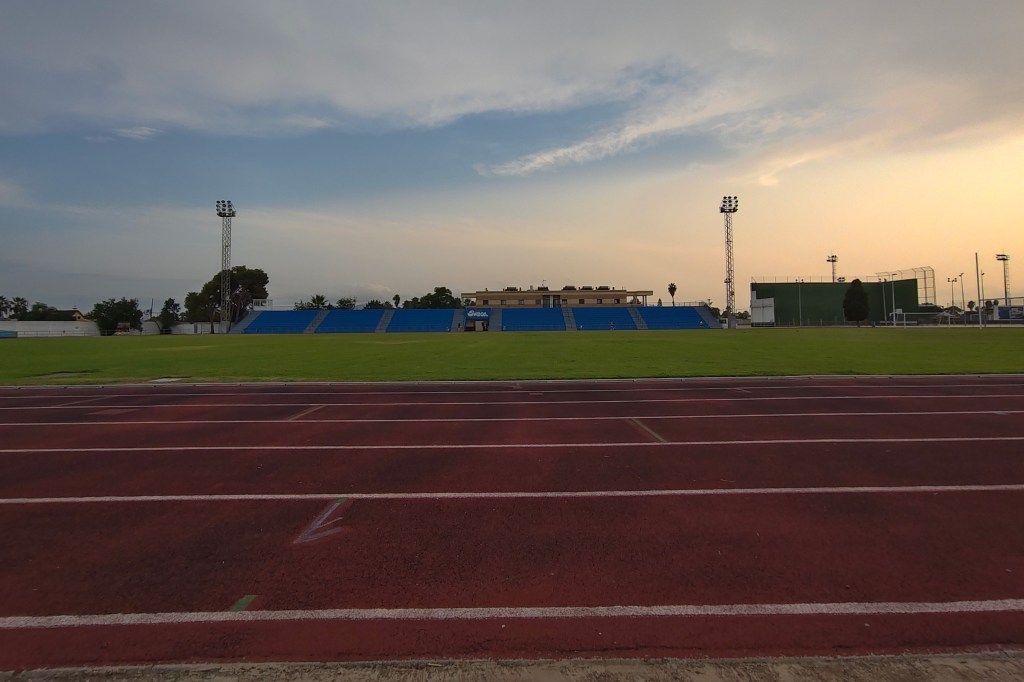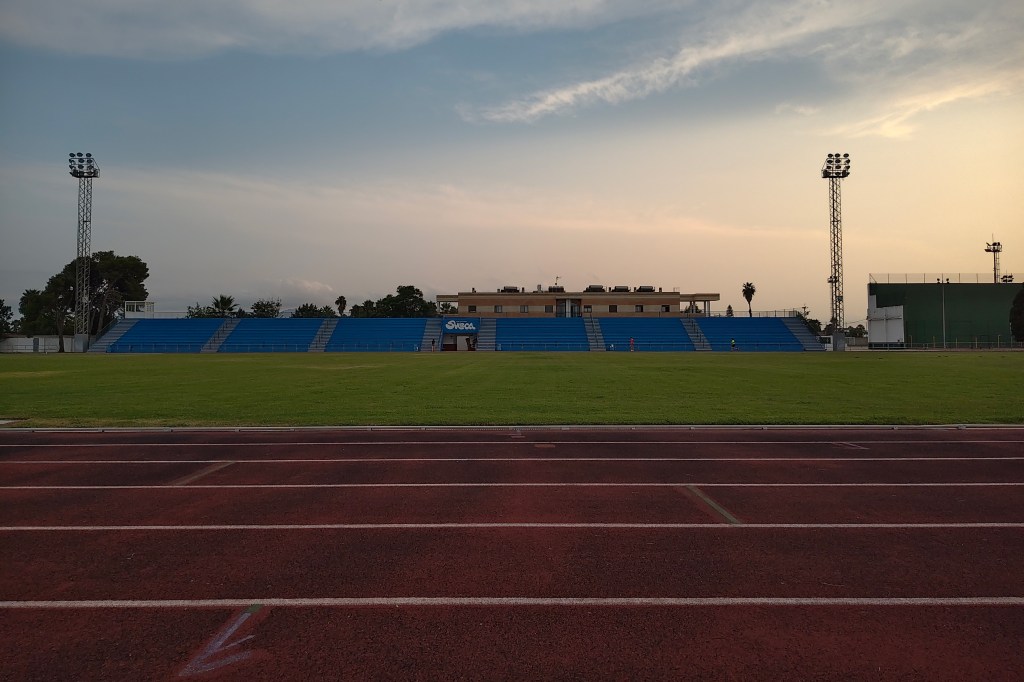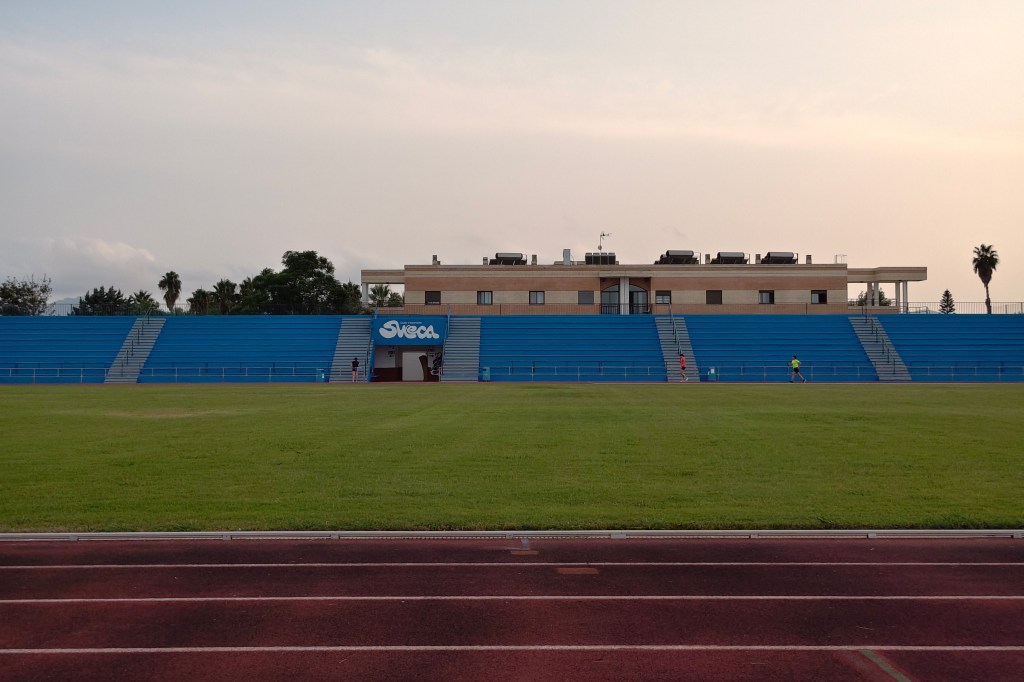Amateur Photographer verdict
The Vivo V60 offers superb portraits, good telephoto performance, a bright display, and long battery life. Ultra-wide quality and AI zoom sharpening hold it back, but it’s great for photo lovers.- Excellent Zeiss portrait photography lens options
- Bright 6.77” AMOLED display (5000 nits peak)
- Well featured camera app
- Huge 6500mAh battery with 90W fast charging
- Not available in all territories
- Ultrawide lens only 8MP
- Aggressive AI sharpening at higher zoom levels
Vivo V60 at a glance:
- 50MP f/1.9, 23mm equivalent, PDAF, OIS main camera
- 50MP f/2.73 73mm equivalent PDAF, OIS periscope 3x telephoto camera
- 8MP f/2.0 15mm equivalent,120˚ FOV ultra-wide camera
- 50MP f/2.2 21mm equivalent AF, selfie camera
- 4K 60p rear, (4K 30p front)
- 6.77” screen 5000nits (peak), 120Hz, AMOLED
- 6500mAh battery, 90W wired flash charge
- 163.2×76.7×7.5mm, 192g, IP68 & IP69
Vivo is an up-and-coming Chinese brand available mostly in Asian, Middle-eastern and European markets, offering Zeiss co-engineered lenses in its smartphones. The Vivo V60, the latest midrange smartphone in their repertoire, now features three cameras – although at the cost of resolution for the ultra-wide unit, and comes only six months after the Vivo V50 was released. Other improvements include a new 10x telephoto stage portrait option, a bigger battery, and a brighter screen.
We review smartphones from the perspective of choosing a smartphone for its photography and camera performance, so we’ll be starting by looking at what the VivoV60 offers in terms of the cameras and what features are included for photography and video.
Vivo V60 – Features
The main difference for photography, a new 50MP periscope telephoto unit (3x), with 3x optical and a 10-100x digital zoom, with an f2.7 aperture and 73mm equivalent field of view. This is the same telephoto Sony IMX882 sensor that you find in the flagship X200FE. However, to achieve this otherwise useful telephoto unit, Vivo sacrificed the resolution of the ultra-wide camera (0.6x) to only 8MP, down from the previous 50MP.
But don’t forget that often when you see 50MP, that doesn’t mean you are actually taking photos at that resolution. With pixel binning technology, you take images at 12MP from a 50MP sensor. This method couples neighbouring pixels together, to make the snsor more sensitive to light and take better images at night and low light. So, unless you shoot in High resolution mode (found under More tab) you are shooting at 12MP from the 50MP sensors too. And in reality, you will find yourself wanting to zoom in on things more often rather than wishing for an ultra-wide view. That said 8MP is a fairly low.
Both 50MP main (1x) and telephoto (3x) cameras have PDAF (Phase detection autofocus) and benefit from OIS (Optical Image Stabilisation). This helps counter blurred images caused by shaky hands and improves low-light performance, as it helps you create sharper images at longer shutter speeds at night.
Video is available for the main 1x and 3x telephoto cameras at 4K60p and for the selfie camera at 4K30p resolution. It has a bigger battery size at 6500mAh and supports 90W wired fast charging and reverse charging too. The V60 runs on Android 15 and Vivo promises 4 years of androoid software updates.
Vivo V60 – Build and Handling
The V60 is a larger-bodied device with a 6.77” curved AMOLED screen, which has a 1500nits global and 5000nits peak brightness. I’ve found it easy to see even in very bright sunlight. The borders look a little thick, but at least they stay the same width all around.
It is also quite slim at only 7.53mm, despite housing a large battery. The front and back is made of glass, with metallic-coloured, but plastic edges. It has a high water and dust resistance rating at IP68 and IP69 and employs a Schott Xensation Core glass to further protect the screen. Vivo also supplies the V60 with a screen protector already applied, a soft silicon case and a 90W charger.
I tested the iridescent Summer Blue colour way that looks a bit like mother-of-pearl. A unique and beautiful finish, a shame that the supplied case is not see-through to show it off. You can also choose from a Berry Purple, Ocean Blue, Desert Gold, and Mist Gray version.
Vivo V60 – Photo app
By default, the regular photo mode opens with the usual Night, Portrait, and Video modes alongside a Micro movie option, which is essentially a recording and editing suite with built-in video filters. You can edit and return to record a short clip to add to your footage easily.
You can enable a quick launch option in the settings, and open the camera by double pressing the lower volume button, and take a quick photo by pressing it for the third time. I found that setting this to Snapshot mode gives a super quick street photo camera setup, as it can take up to 20 images in burst. I especially liked that you can customise the main menu and remove or add modes that you use the most.
Some new features in portrait mode include two new focal lengths for the Zeiss Portrait lens kit, an 85mm and a 100mm option, ideal for shoulder-length portraits or close-ups of the face. In Aura light, your flash unit doubles up as a continuous light with adjustable colour temperature and brightness. There are portrait filter options that leverage this and create popular portrait lighting looks such as Rembrandt or Butterfly lighting.
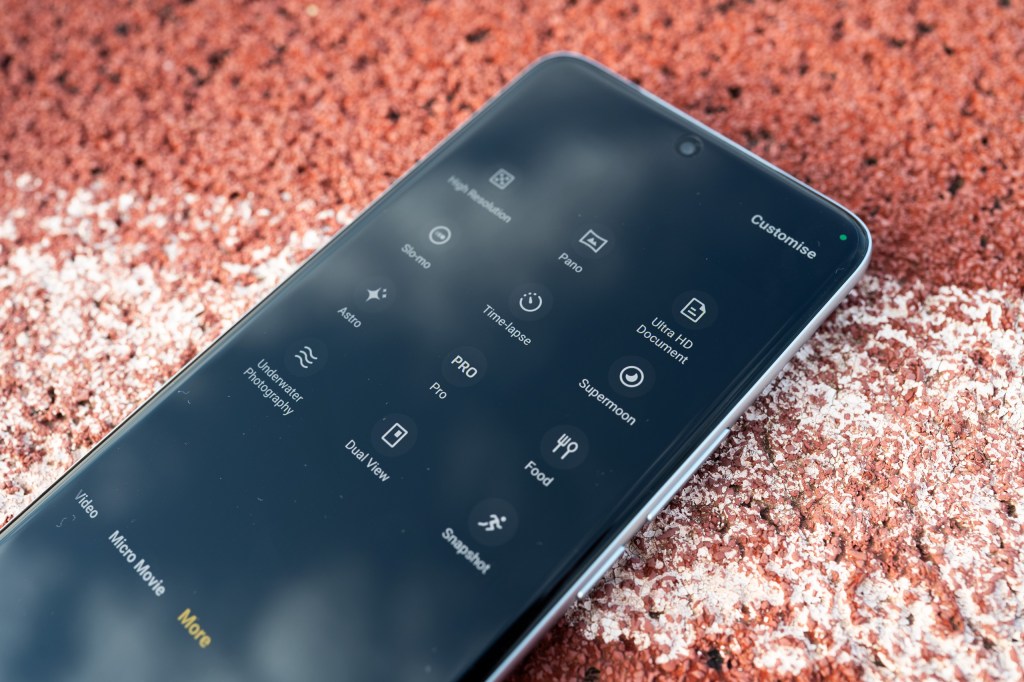
The new 10x Stage mode automatically recognises stage scenes using AI and adjusts parameters for more optimal image capture at concerts and performances. Other AI features include magic erase, move, expander, enhance and four seasons portrait (for more info about these see check out the X200FE review). Swiping up from the bottom a film camera mode opens with various filters and borders to choose from. Whereas under the more tab you’ll find a High-res option to shoot at the sensor’s full resolution and a Pro and RAW mode amongst others.
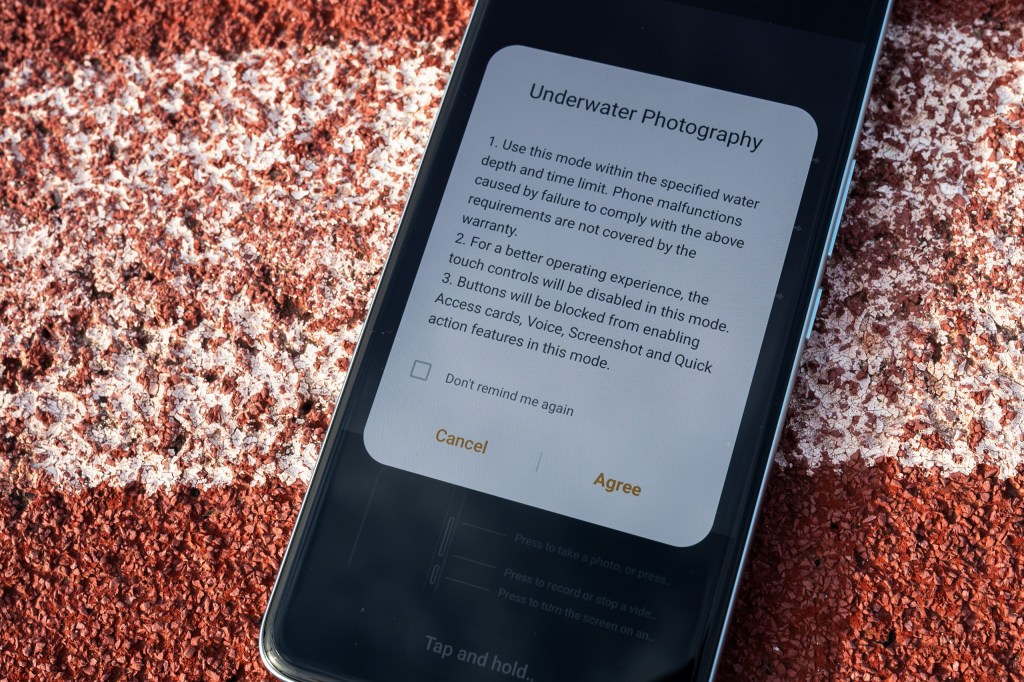
To my surprise, there’s a dedicated underwater photography mode here, which wasn’t included in the flagship X200FE. The V60 has a high IP68&IP69 dust and water resistance rating, just like the X200FE which suggests you can immerse it up to 1.5m depth in fresh water for 30 minutes. It offers a water eject option after using this mode, which will play a piece of music at full volume to dispel any water. Make sure that the charging port is properly dried out before you connect your phone. This all sounds interesting, but in reality phone manufacturers don’t cover water damage even if they advertise their phones as immersible or include underwater photography modes. So if you want to use your phone underwater, I still recommend you get a proper case for it.
Vivo V60 – Image quality and performance
Colours are well matched between the three lenses, but upon close scrutiny, you can see some oversharpening, especially from the telephoto lens results. The 0.6x is the weakest performer, but it can be a nice to have when you need a wider field of view.
With the telephoto camera, results are generally good and usable up until the 10x zoom; above this, the AI sharpening kicks in and can create some unrealistic results depending on your subject, as you will see. As for the 100x option, it is more of a marketing gimmick than a real tool in most cases.

Where the V60 excels, in my opinion, is portrait photography. You get a very comprehensive portrait mode with Zeiss portrait lens options, five focal lengths available to shoot anything between environmental, half-length, or traditional and close-up portraits. Furthermore, you can choose between various bokeh shape options and colour filters, not to mention the aura light filters.

The Selfie camera has the same bokeh effects available as the main portrait mode, as well as various beauty and makeup options. Below, the Biotar bokeh option was selected at f/0.95. Pushing the bokeh slider to this strongest setting, the background appears very out of focus; although the effect looks unrealistic. It detected edges relatively well, but you may need to reposition yourself to get a more even look. Just above my shoulder, and around my fly-away hairs, the separation is not as good as the bokeh was set to the strongest. But as soon as I opted for the f/1.4 or higher option, this wasn’t so noticeable.

As the 0.6x ultrawide lens has a fixed focus you won’t get close enough to your subject to take good close-ups. For macro photography, the 1x main (23mm equivalent) and the 3x telephoto (73mm equivalent) cameras will be the ones you want to use; they are brighter, have higher resolution, and also benefit from autofocus and image stabilisation. Using the portrait mode to adjust how much the background appears out of focus can help elevate your images as well.
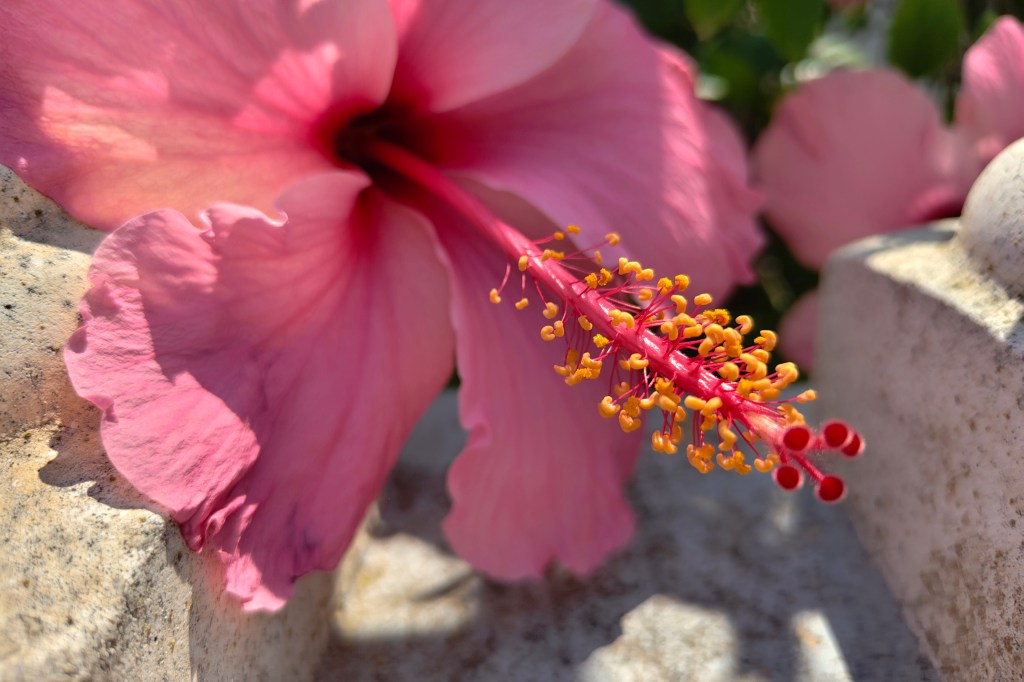
In Night mode images are more detailed compared to using the regular photo mode at night. The main 1x lens (23mm equivalent) delivers the best results here, given that it is also the brightest. The ultrawide 0.6x lens (16mm equivalent) on the other hand noticeably lags behind, with images appearing soft and lacking detail. The periscope telephoto lens between 2-10x zoom yields the best results.
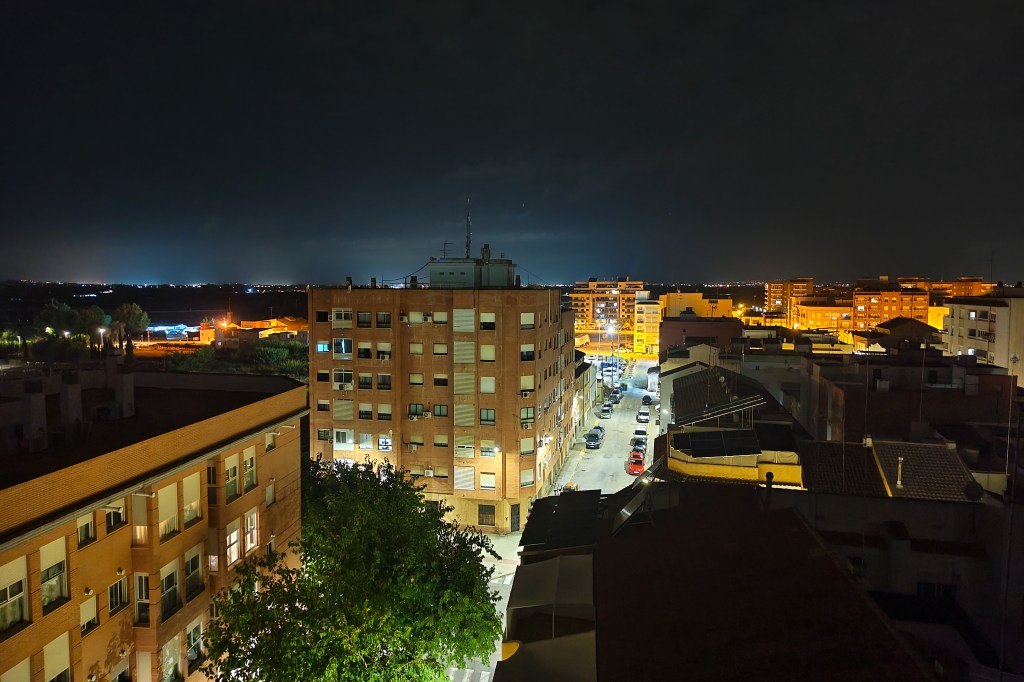
Vivo V60 – Value for money
The V50’s price at launch was around €600/512GB so I am expecting to see a similar price range for the V60 version. If you are looking for something slightly cheaper take a look at the Samsung Galaxy S24 FE. Or if you are willing to spend a bit more the Google Pixel 9a can be a good option at $496/£359 for 128GB or $599/£449 for 256GB version, although there is no telephoto camera, just digital/hybrid zoom.
Vivo V60 – Verdict
The Vivo V60 is a well-rounded midrange smartphone that delivers excels in portrait photography and also has a solid telephoto performance. Its versatile Zeiss-enhanced camera system stands out, whereas the bright AMOLED display, and impressive battery life make it an attractive choice. Its slim build, premium finish, and strong IP ratings add to its appeal. However, the drop in ultra-wide resolution and some aggressive AI sharpening at higher zoom levels limit its versatility for certain shooting scenarios. For mobile photographers who prioritise portraits and telephoto reach over ultra-wide quality, the V60 is a strong contender in its price range.

Vivo V60 – Full Specifications
| Wide-angle, main camera | 50MP f/1.9, 23mm, Sony IMX766 1/1.56”, 1.0µm, sensor PDAF, OIS |
| Telephoto camera | 50MP f/2.7 73mm, Zeiss Periscope IMX882 1/1.95″sensor, 0.8µm, PDAF, OIS, 3x optical zoom |
| Ultra-wide-angle camera | 8MP f/2.0, 15mm, 120˚ |
| Selfie camera | 50MP f/2.2, 21mm (wide), 1/2.76″, 0.64µm, AF |
| Display | 6.77” 120Hz, 5000nits AMOLED quad curved display |
| Video | 4K 60p back, 4K 30p front gyro-EIS, OIS |
| Battery | 6500mAh, 90W wired charge, reverse wired |
| OS | Qualcomm Snapdragon 7 gen 4 |
| RAM | 8GB/12GB/16GB |
| Water and dust resistance | IP68 & IP69 |
| Dimensions | 163 x 76 x 7.53mm |
| Weight | 192g |

